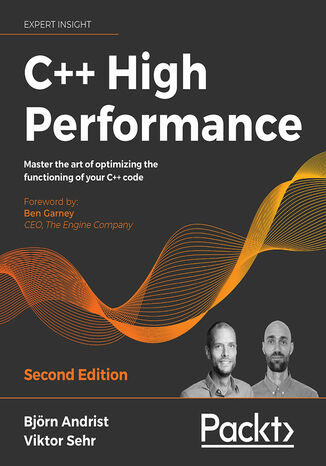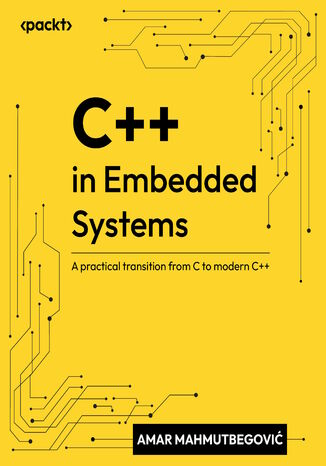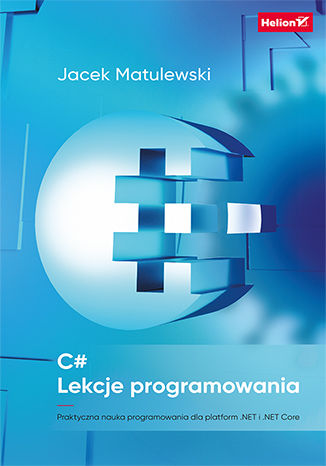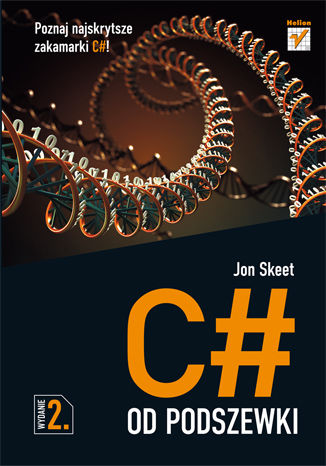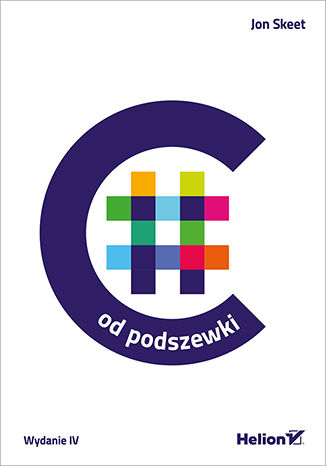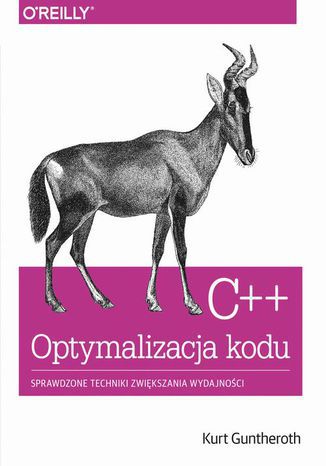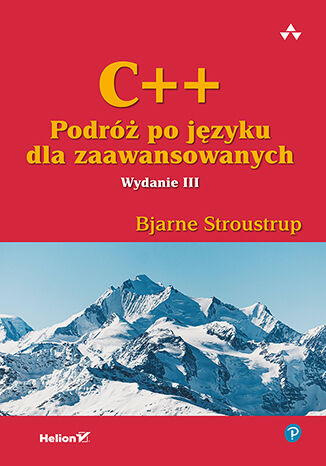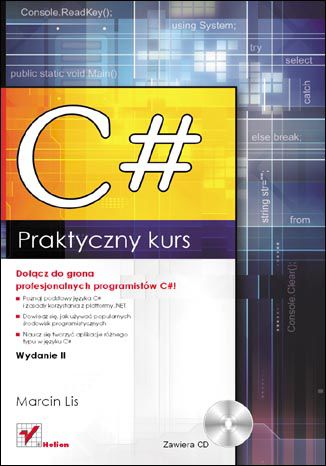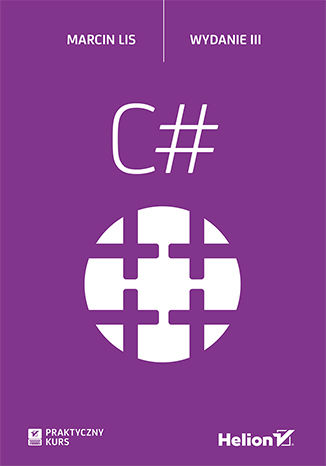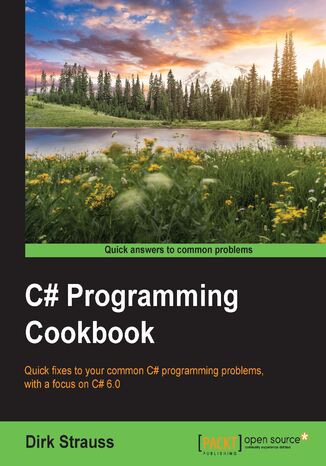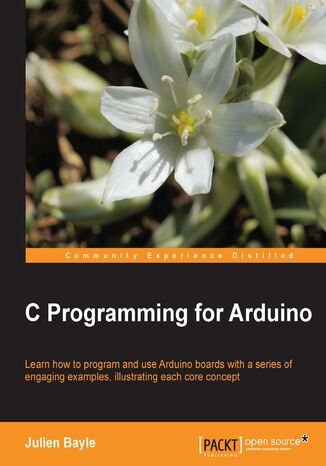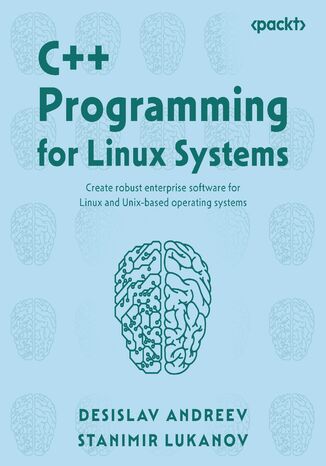Categories
Ebooks
-
Business and economy
- Bitcoin
- Businesswoman
- Coaching
- Controlling
- E-business
- Economy
- Finances
- Stocks and investments
- Personal competence
- Computer in the office
- Communication and negotiation
- Small company
- Marketing
- Motivation
- Multimedia trainings
- Real estate
- Persuasion and NLP
- Taxes
- Social policy
- Guides
- Presentations
- Leadership
- Public Relation
- Reports, analyses
- Secret
- Social Media
- Sales
- Start-up
- Your career
- Management
- Project management
- Human Resources
-
For children
-
For youth
-
Education
-
Encyclopedias, dictionaries
-
E-press
- Architektura i wnętrza
- Health and Safety
- Biznes i Ekonomia
- Home and garden
- E-business
- Ekonomia i finanse
- Esoterecism
- Finances
- Personal finance
- Business
- Photography
- Computer science
- HR & Payroll
- For women
- Computers, Excel
- Accounts
- Culture and literature
- Scientific and academic
- Environmental protection
- Opinion-forming
- Education
- Taxes
- Travelling
- Psychology
- Religion
- Agriculture
- Book and press market
- Transport and Spedition
- Healthand beauty
-
History
-
Computer science
- Office applications
- Data bases
- Bioinformatics
- IT business
- CAD/CAM
- Digital Lifestyle
- DTP
- Electronics
- Digital photography
- Computer graphics
- Games
- Hacking
- Hardware
- IT w ekonomii
- Scientific software package
- School textbooks
- Computer basics
- Programming
- Mobile programming
- Internet servers
- Computer networks
- Start-up
- Operational systems
- Artificial intelligence
- Technology for children
- Webmastering
-
Other
-
Foreign languages
-
Culture and art
-
School reading books
-
Literature
- Antology
- Ballade
- Biographies and autobiographies
- For adults
- Dramas
- Diaries, memoirs, letters
- Epic, epopee
- Essay
- Fantasy and science fiction
- Feuilletons
- Work of fiction
- Humour and satire
- Other
- Classical
- Crime fiction
- Non-fiction
- Fiction
- Mity i legendy
- Nobelists
- Novellas
- Moral
- Okultyzm i magia
- Short stories
- Memoirs
- Travelling
- Narrative poetry
- Poetry
- Politics
- Popular science
- Novel
- Historical novel
- Prose
- Adventure
- Journalism, publicism
- Reportage novels
- Romans i literatura obyczajowa
- Sensational
- Thriller, Horror
- Interviews and memoirs
-
Natural sciences
-
Social sciences
-
School textbooks
-
Popular science and academic
- Archeology
- Bibliotekoznawstwo
- Cinema studies
- Philology
- Polish philology
- Philosophy
- Finanse i bankowość
- Geography
- Economy
- Trade. World economy
- History and archeology
- History of art and architecture
- Cultural studies
- Linguistics
- Literary studies
- Logistics
- Maths
- Medicine
- Humanities
- Pedagogy
- Educational aids
- Popular science
- Other
- Psychology
- Sociology
- Theatre studies
- Theology
- Economic theories and teachings
- Transport i spedycja
- Physical education
- Zarządzanie i marketing
-
Guides
-
Game guides
-
Professional and specialist guides
-
Law
- Health and Safety
- History
- Road Code. Driving license
- Law studies
- Healthcare
- General. Compendium of knowledge
- Academic textbooks
- Other
- Construction and local law
- Civil law
- Financial law
- Economic law
- Economic and trade law
- Criminal law
- Criminal law. Criminal offenses. Criminology
- International law
- International law
- Health care law
- Educational law
- Tax law
- Labor and social security law
- Public, constitutional and administrative law
- Family and Guardianship Code
- agricultural law
- Social law, labour law
- European Union law
- Industry
- Agricultural and environmental
- Dictionaries and encyclopedia
- Public procurement
- Management
-
Tourist guides and travel
- Africa
- Albums
- Southern America
- North and Central America
- Australia, New Zealand, Oceania
- Austria
- Asia
- Balkans
- Middle East
- Bulgary
- China
- Croatia
- The Czech Republic
- Denmark
- Egipt
- Estonia
- Europe
- France
- Mountains
- Greece
- Spain
- Holand
- Iceland
- Lithuania
- Latvia
- Mapy, Plany miast, Atlasy
- Mini travel guides
- Germany
- Norway
- Active travelling
- Poland
- Portugal
- Other
- Przewodniki po hotelach i restauracjach
- Russia
- Romania
- Slovakia
- Slovenia
- Switzerland
- Sweden
- World
- Turkey
- Ukraine
- Hungary
- Great Britain
- Italy
-
Psychology
- Philosophy of life
- Kompetencje psychospołeczne
- Interpersonal communication
- Mindfulness
- General
- Persuasion and NLP
- Academic psychology
- Psychology of soul and mind
- Work psychology
- Relacje i związki
- Parenting and children psychology
- Problem solving
- Intellectual growth
- Secret
- Sexapeal
- Seduction
- Appearance and image
- Philosophy of life
-
Religion
-
Sport, fitness, diets
-
Technology and mechanics
Audiobooks
-
Business and economy
- Bitcoin
- Businesswoman
- Coaching
- Controlling
- E-business
- Economy
- Finances
- Stocks and investments
- Personal competence
- Communication and negotiation
- Small company
- Marketing
- Motivation
- Real estate
- Persuasion and NLP
- Taxes
- Social policy
- Guides
- Presentations
- Leadership
- Public Relation
- Secret
- Social Media
- Sales
- Start-up
- Your career
- Management
- Project management
- Human Resources
-
For children
-
For youth
-
Education
-
Encyclopedias, dictionaries
-
E-press
-
History
-
Computer science
-
Other
-
Foreign languages
-
Culture and art
-
School reading books
-
Literature
- Antology
- Ballade
- Biographies and autobiographies
- For adults
- Dramas
- Diaries, memoirs, letters
- Epic, epopee
- Essay
- Fantasy and science fiction
- Feuilletons
- Work of fiction
- Humour and satire
- Other
- Classical
- Crime fiction
- Non-fiction
- Fiction
- Mity i legendy
- Nobelists
- Novellas
- Moral
- Okultyzm i magia
- Short stories
- Memoirs
- Travelling
- Poetry
- Politics
- Popular science
- Novel
- Historical novel
- Prose
- Adventure
- Journalism, publicism
- Reportage novels
- Romans i literatura obyczajowa
- Sensational
- Thriller, Horror
- Interviews and memoirs
-
Natural sciences
-
Social sciences
-
Popular science and academic
-
Guides
-
Professional and specialist guides
-
Law
-
Tourist guides and travel
-
Psychology
- Philosophy of life
- Interpersonal communication
- Mindfulness
- General
- Persuasion and NLP
- Academic psychology
- Psychology of soul and mind
- Work psychology
- Relacje i związki
- Parenting and children psychology
- Problem solving
- Intellectual growth
- Secret
- Sexapeal
- Seduction
- Appearance and image
- Philosophy of life
-
Religion
-
Sport, fitness, diets
-
Technology and mechanics
Videocourses
-
Data bases
-
Big Data
-
Biznes, ekonomia i marketing
-
Cybersecurity
-
Data Science
-
DevOps
-
For children
-
Electronics
-
Graphics/Video/CAX
-
Games
-
Microsoft Office
-
Development tools
-
Programming
-
Personal growth
-
Computer networks
-
Operational systems
-
Software testing
-
Mobile devices
-
UX/UI
-
Web development
-
Management
Podcasts
- Ebooks
- Computer science
Computer science
C++ High Performance. Master the art of optimizing the functioning of your C++ code - Second Edition
Björn Andrist, Viktor Sehr, Ben Garney
C++ High Performance, Second Edition guides you through optimizing the performance of your C++ apps. This allows them to run faster and consume fewer resources on the device they're running on without compromising the readability of your codebase.The book begins by introducing the C++ language and some of its modern concepts in brief. Once you are familiar with the fundamentals, you will be ready to measure, identify, and eradicate bottlenecks in your C++ codebase. By following this process, you will gradually improve your style of writing code. The book then explores data structure optimization, memory management, and how it can be used efficiently concerning CPU caches.After laying the foundation, the book trains you to leverage algorithms, ranges, and containers from the standard library to achieve faster execution, write readable code, and use customized iterators. It provides hands-on examples of C++ metaprogramming, coroutines, reflection to reduce boilerplate code, proxy objects to perform optimizations under the hood, concurrent programming, and lock-free data structures. The book concludes with an overview of parallel algorithms.By the end of this book, you will have the ability to use every tool as needed to boost the efficiency of your C++ projects.
C++ i Qt. Wprowadzenie do wzorców projektowych. Wydanie II
Najlepsze wzorce dla C++ i Qt! Język C++ przez długie lata był liderem wśród języków programowania i wciąż jest rozwijany. Qt to zestaw bibliotek pozwalający na tworzenie atrakcyjnego interfejsu użytkownika, działającego w różnych systemach operacyjnych — Windows, Mac OS X oraz Linux. Projekt jest intensywnie rozwijany od 1992 roku, a najnowsza wersja daje nawet możliwość tworzenia aplikacji internetowych czy mobilnych. Wykorzystanie możliwości C++ oraz potencjału Qt może dać niezwykłe efekty! W trakcie lektury nauczysz się podstaw języka C++ i zgłębisz tajniki bibliotek Qt. Zdobędziesz interesujące informacje na temat wykorzystania kontenerów, metaobiektów, metawłaściwości i mechanizmu refleksji. Dowiesz się, jak wykorzystać wzorzec MVC (ang. Model-View-Controller) oraz w jaki sposób opanować problemy związane z programowaniem współbieżnym. Ponadto nauczysz się panować nad wskaźnikami i unikać typowych problemów związanych z dostępem do pamięci. Książka ta jest doskonałą pozycją dla wszystkich programistów C++, którzy chcą wzbogacić swój warsztat o bibliotekę Qt. Dzięki tej książce: - poznasz podstawy C++ oraz Qt - opanujesz programowanie współbieżne - zrozumiesz wzorzec MVC - zbudujesz interesującą aplikację przy użyciu C++ i Qt Wykorzystaj moc duetu: C++ i Qt!
C++ in Embedded Systems. A practical transition from C to modern C++
Amar Mahmutbegović, Steve Branam
Transitioning from C can be daunting, with concerns about performance overhead, added complexity, and unfamiliar tooling. Addressing these challenges, Amar Mahmutbegovic, an advocate for modern C++ in embedded development, shows you how to harness zero-cost abstractions, compile-time checks, and powerful modern C++ capabilities to preserve performance while achieving safer, cleaner code. This book bridges the gap between traditional C and advanced C++, helping you retain the efficiency C developers demand while unlocking the safety and expressiveness of modern C++. Starting with a modern development environment setup, including a Docker container for seamless example replication, you’ll overcome the hurdles of using the C++ standard library in memory-constrained settings and get acquainted with the Embedded Template Library (ETL) as an alternative. The book walks you through essential C++ concepts before exploring advanced topics such as templates, strong typing, error handling, compile-time computation, and RAII. Through practical examples, you'll implement a sequencer, write a type-safe HAL, and apply patterns like Command, State, and Observer to solve common embedded development problems. By the end of this book, you’ll have learned how to apply modern C++ to develop robust, modular firmware with performance matching or exceeding hand-coded C solutions.
C# Interview Guide. Boost your confidence with answers to hundreds of secret interview questions
If you're gearing up for technical interviews by enhancing your programming skills and aiming for a successful career in C# programming and software development, the C# Interview Guide is your key to interview success.Designed to equip you with essential skills for excelling in technical interviews, this guide spans a broad spectrum, covering fundamental C# programming concepts to intricate technical details. As you progress, you'll develop proficiency in crafting compelling resumes, adeptly answering behavioral questions, and navigating the complexities of salary negotiations and job evaluations. What sets this book apart is its coverage, extending beyond technical know-how and incorporating real-world experiences and expert insights from industry professionals. This comprehensive approach, coupled with guidance on overcoming challenges, ranging from interview preparation to post-interview strategies, makes this guide an invaluable resource for those aspiring to advance in their C# programming careers.By the end of this guide, you’ll emerge with a solid understanding of C# programming, advanced technical interview skills, and the ability to apply industry best practices.
C#. Lekcje programowania. Praktyczna nauka programowania dla platform .NET i .NET Core
Programistą być Książka, którą trzymasz w ręku, to znakomity podręcznik do nauki programowania od podstaw. Autor, wieloletni wykładowca akademicki i nauczyciel studentów informatyki, proponuje naukę programowania w języku C#. To wybór nieprzypadkowy. C# jest nowoczesnym, obiektowym, stale rozwijanym i popularnym językiem, którym opiekuje się firma Microsoft. Dodatkowo ― dzięki podobieństwu C# do innych często używanych języków z rodziny C, C++ i Java ― wszystko, czego nauczysz się z podręcznika, możesz wykorzystać także do programowania w tych językach. Zakres zagadnień omawianych w książce obejmuje: język programowania C# 6.0, w tym posługiwanie się zmiennymi, metodami, tablicami oraz kolekcjami danych z platform .NET i .NET Core podstawowe techniki programowania obiektowego różne formaty przechowywania i eksportu danych darmowe środowisko programistyczne Microsoft Visual Studio 2019 Community Jeżeli chcesz uczyć się programować od podstaw ― to książka dla Ciebie. Jeżeli znasz już podstawy, ale chcesz poznać C# oraz platformy .NET i .NET Core ― to również dobry wybór. Uwaga! Podręcznik zawiera ćwiczenia, w których krok po kroku opisano tworzenie aplikacji konsolowych w darmowym Visual Studio 2019 i omówiono ich kod, a także bogaty zestaw zadań do samodzielnego wykonania!
C++ Memory Management. Write leaner and safer C++ code using proven memory-management techniques
C++ programmers often face challenges in allocating and managing memory efficiently, especially given the diverse needs of real-time systems, embedded systems, games, and conventional desktop applications. This book offers a targeted approach to address the unique memory constraints of each domain.Written by an ISO C++ Standards Committee member, Patrice Roy, this guide covers fundamental concepts of object lifetime and memory organization to help you write simpler and safer programs. You’ll learn how to control memory allocation mechanisms, create custom containers and allocators, and adapt allocation operators to suit your specific requirements, making your programs smaller, faster, safer, and more predictable.Starting with core principles of memory management, this book introduces modern facilities that simplify your work and then dives into memory management mechanics, building solutions for specific application needs, and measuring their impact on your program’s behavior.By the end of this book, you’ll be able to write secure programs that handle memory optimally for your application domain. You will also have a strong grasp of both high-level abstractions for safer programs and low-level abstractions that allow detailed customization.
Poznaj najskrytsze zakamarki C#! Obecnie szczególnie cenione są te języki programowania, które pozwalają na błyskawiczne osiągnięcie oczekiwanych efektów. Dodatkowo absolutnie niezbędne jest zachowanie możliwości uruchamiania raz napisanej aplikacji na różnych platformach bez konieczności jej przepisywania. Nikt nie ma na to czasu! C# to nowoczesny język, który zdobył uznanie programistów na całym świecie, ponieważ spełnia nawet najbardziej wyśrubowane wymagania! Ten bezcenny podręcznik zaprowadzi Cię w najskrytsze zakątki języka C#. Autorzy założyli, że znasz jego podstawy - to pozwoliło im skupić uwagę na niuansach, ciekawostkach oraz subtelnych szczegółach. W trakcie lektury zrozumiesz, co się dzieje w czeluściach C#, a dzięki temu unikniesz ukrytych pułapek. Książka ta jest obowiązkową pozycją każdego programisty C#. Bez niej najciekawsze funkcje C# wciąż będą Ci obce! Dowiedz się: do czego przydają się typy generyczne jak zaimplementować iteratory jak zoptymalizować skompilowany kod w czym może pomóc język LINQ jak testować kod Fascynująca podróż w głąb C#!
C# liczy sobie około dwudziestu lat. Jest niestrudzenie rozwijany i doskonalony przez Microsoft, a dzięki swojej wszechstronności znajduje zastosowanie w wielu dziedzinach: pisaniu gier komputerowych, tworzeniu skalowalnych i niezawodnych aplikacji internetowych oraz aplikacji mobilnych, a nawet niskopoziomowym programowaniu komponentów większych systemów. Twórcy C# postawili na obiektowość, ścisłą kontrolę typów, a przede wszystkim na prostotę w stosowaniu. W tym celu wykorzystano wyniki badań akademickich i połączono je z praktycznymi technikami rozwiązywania problemów. W efekcie C# stał się ulubionym językiem profesjonalistów. To czwarte wydanie podręcznika przeznaczonego dla programistów C#, którzy znają podstawy tego języka, jednak zależy im na dogłębnym zrozumieniu ważnych pojęć i przyswojeniu różnych sposobów myślenia o pozornie znanych zagadnieniach. W książce skrótowo opisano wersje C# od 2 do 5, a wyczerpująco omówiono wersje od 6 do 7.3. Zaprezentowano również niektóre informacje o projektowanych nowych elementach języka C# 8, takich jak typy referencyjne przyjmujące wartość null, wyrażenia switch, usprawnienia dopasowywania wzorców, a także dalsza integracja asynchroniczności z podstawowymi mechanizmami języka. Poszczególne treści zilustrowano licznymi przykładami kodu źródłowego. W tej książce między innymi: wyrażenia lambda, inicjalizatory zapytań, asynchroniczność składowe z ciałem w postaci wyrażenia zaawansowane techniki pracy z ciągami znaków zagadnienia integracji krotek z językiem dekonstruktory i dopasowywanie wzorców nowe techniki stosowania referencji i powiązanych mechanizmów C#. Programowanie na najwyższym poziomie!
We współczesnym świecie, pełnym pośpiechu i rywalizacji, wydajność programu jest równie istotna dla klientów, jak oferowane przez niego funkcje. Ten praktyczny podręcznik wyjaśnia podstawowe zasady podnoszenia wydajności, które pomagają w optymalizacji kodu C++. Uczy, jak dostosowywać poprawny kod C++ tak, aby działał on szybciej i zużywał mniej zasobów na każdym komputerze, począwszy od zegarka, poprzez telefon, stację roboczą, superkomputer, aż po globalną sieć serwerów. Autor Kurt Guntheroth prezentuje szereg przykładów demonstrujących, w jaki sposób można, stopniowo wdrażając przedstawione zasady, osiągnąć kod spełniający wymagania klientów dotyczące reaktywności i przepustowości. O przydatności porad zamieszczonych w tej książce będzie się można przekonać, gdy kolega z zespołu zawoła: Zaczęło działać niesamowicie szybko. Kto coś naprawił? Dowiedz się jak: Wyznaczać kandydatów do optymalizacji przy użyciu programu profilującego oraz czasomierzy programowych Przeprowadzać powtarzalne eksperymenty w celu mierzenia wydajności zmodyfikowanych wersji kodu Optymalizować użycie zmiennych dynamicznych Podnieść wydajność kosztownych pętli i funkcji Przyspieszyć działanie funkcji przetwarzających ciągi Rozpoznawać efektywne algorytmy i wzorce optymalizacyjne Identyfikować mocne i słabe strony klas kontenerów w C++ Analizować wyszukiwanie i sortowanie z perspektywy optymalizatora W efektywny sposób używać funkcji przesyłania strumieniowego we/wy w języku C++ W wydajny sposób stosować w kodzie C++ funkcje równoległe bazujące na wątkach Cenne źródło praktycznych porad aktualnych, trafnych i osadzonych w rzeczywistości. Solidne kompendium wiedzy o nowym obliczu języka C++. Jerry Tan Starszy programista, The Depository Trust and Clearing Corporation Kurt Guntheroth, programista z ponad 35-letnim doświadczeniem, od ćwierćwiecza zajmuje się opracowywaniem wydajnego kodu C++. Rozwija programy dla platform Windows, Linux oraz systemów wbudowanych. Kurt mieszka w Seattle w stanie Waszyngton.
C++. Podróż po języku dla zaawansowanych. Wydanie II
Żadnego programisty nie trzeba przekonywać o zaletach C++. To język dojrzały, wszechstronny, pozwalający uzyskiwać maksymalną wydajność kodu. Do tego wciąż konsekwentnie rozwijany - współczesny C++ wygląda zupełnie inaczej niż dwadzieścia lat temu. Oznacza to, że profesjonalny programista, który chce w pełni wykorzystać zalety nowoczesnego C++, musi bardzo dobrze orientować się w nowościach przynoszonych przez kolejne specyfikacje języka. Warto również wiedzieć, jak zmieniają się dostępne narzędzia językowe i biblioteki, a także które paradygmaty programowania są przez nie wspierane i w jakim zakresie. Ta książka jest idealnym wyborem dla programisty C lub C++, który chce lepiej zapoznać się z nowościami w języku C++. Jest to zwięzły i dokładny przewodnik po najważniejszych elementach języka i komponentach biblioteki standardowej z uwzględnieniem niedawno wprowadzonych udoskonaleń i udogodnień. Znalazły się tu również liczne przykłady i praktyczne wskazówki, które szczególnie istotne okażą się w kontekście paradygmatów programowania, takich jak programowanie generyczne i zorientowane obiektowo. Poza dość podstawowymi zagadnieniami omówiono tu tematykę semantyki przenoszenia, jednolitej inicjalizacji, wyrażeń lambda, kontenerów i współbieżności. Książka kończy się interesującym opisem projektu i ewolucji języka C++. Najciekawsze zagadnienia: podstawy działania kodu C++ operacje standardowe oraz operacje wejścia-wyjścia szablony, w tym szablony funkcji i szablony zmienne algorytmy w C++ i narzędzia pomocnicze zadania, wątki, komunikacja między procesami niektóre nowości planowane dla przyszłych implementacji C++ Na pewno znasz C++. Ale czy sprawnie się nim posługujesz?
C++. Podróż po języku dla zaawansowanych. Wydanie III
C++ zmienił się nie do poznania: jest nowocześniejszy, bardziej precyzyjny, pozwala też na pisanie zwięzłego i efektywnego kodu. Programista ma dokładniejszą kontrolę nad działaniem programu, co przekłada się na szybkość pracy i lepsze wykorzystywanie zasobów sprzętowych. Dodatkowo ekosystem C++ oferuje mnóstwo bibliotek, narzędzi czy środowisk programistycznych. Aby jednak pisać w nim dobry kod, trzeba sprawnie poruszać się po świecie C++. To drugie wydanie zwięzłego przewodnika po C++ dla doświadczonych programistów, zaktualizowane do standardu C++20. Dzięki niemu zaznajomisz się z najważniejszymi elementami języka i biblioteki standardowej, koniecznymi do efektywnej pracy w takich stylach programowania jak programowanie zorientowane obiektowo czy generyczne. W tym wydaniu opisano wiele nowych elementów dodanych w C++20, w tym moduły, koncepcje, współprocedury i zakresy. Omówiono też wybrane komponenty biblioteki, które pojawią się dopiero w standardzie C++23. Jeśli jesteś programistą C lub C++ i zależy Ci, by lepiej poznać najnowsze możliwości języka C++, albo biegle posługujesz się innym językiem programowania i chcesz ogólnie zaznajomić się z zaletami nowoczesnego C++ ― nie znajdziesz bardziej zwięzłego i prostszego przewodnika niż ten. W książce między innymi: nowe możliwości języka w standardzie C++20 moduły, klasy i obsługa błędów operacje, zarządzanie zasobami i wejście-wyjście generatory, potoki, kontenery współbieżność i wielozadaniowość Oto nowoczesny C++: poznaj jego ukryte możliwości!
C#. Praktyczny kurs. Wydanie II
Dołącz do grona profesjonalnych programistów C#! Poznaj podstawy języka C# i zasady korzystania z platformy .NET Dowiedz się, jak używać popularnych środowisk programistycznych Naucz się tworzyć aplikacje różnego typu w języku C# C# to nowoczesny, w pełni obiektowy następca języków C i C++, łączący w sobie ich legendarną wydajność z mechanizmami, które doskonale sprawdziły się w środowiskach Javy i Delphi. Opracowany przez firmę Microsoft jako podstawowe narzędzie programistyczne dla platformy .NET, język C# zdobywa coraz większą popularność również za sprawą poziomu bezpieczeństwa, możliwości przenoszenia kodu oraz dostępu do wielu przydatnych narzędzi, które znacznie ułatwiają tworzenie różnego rodzaju programów, w tym aplikacji WWW, sieciowych, bazodanowych i graficznych. Niezależnie od tego, czy dopiero zaczynasz swoją przygodę z programowaniem, czy też masz już pewne doświadczenie w korzystaniu z innych języków, książka "C#. Praktyczny kurs. Wydanie II " będzie dla Ciebie doskonałym wprowadzeniem w arkana praktycznego stosowania języka C#. Dzięki niej poznasz wszystkie niezbędne informacje teoretyczne i szybko zaczniesz pisać swoje pierwsze programy. Dowiesz się nie tylko jak używać podstawowych konstrukcji języka, lecz również jak korzystać z zaawansowanych mechanizmów obiektowych, obsługiwać wyjątki i przeprowadzać operacje wejścia-wyjścia, a nawet tworzyć interfejsy graficzne aplikacji. Podstawowe informacje na temat języka C# i platformy .NET Przegląd i instalacja narzędzi przydatnych programiście C# Struktura programu w C#, proste typy danych i ich zastosowanie Podstawowe konstrukcje języka i operacje na zmiennych Instrukcje sterujące i korzystanie z tablic Podstawy programowania obiektowego Elementy składowe klas i ich używanie Dziedziczenie i polimorfizm Interfejsy, klasy zagnieżdżone i typy uogólnione Obsługa wyjątków standardowych i definiowanie własnych Operacje na strumieniach danych, plikach i katalogach Korzystanie z komponentów graficznych i obsługa zdarzeń Poznaj nowoczesny język programowania! Poznaj C#!
C#. Praktyczny kurs. Wydanie III
Programuj w C#! Zanim zaczniesz programować, czyli podstawowe koncepcje i uruchomienie programu Elementy języka, czyli od typów danych do zmiennych, operatorów i instrukcji Programowanie obiektowe, czyli obiekty, klasy, dziedziczenie i cała reszta C# należy do rodziny obiektowych języków programowania. Co to oznacza? Otóż znajduje się on w doborowym towarzystwie Javy, C++ i wielu innych języków, za pomocą których można tworzyć wspaniałe aplikacje, ale jednocześnie jest od nich odrobinę łatwiejszy. Jeśli dopiero zaczynasz przygodę z programowaniem, szybciej uda Ci się go opanować, a jeśli jest to dla Ciebie któryś kolejny język, zrozumienie jego składni i reguł nie powinno sprawić Ci większych trudności — szczególnie jeśli do nauki wykorzystasz tę książkę. Ten znakomity praktyczny podręcznik pozwoli Ci przećwiczyć używanie i sposób działania wszystkich elementów C# — różnych typów danych, zmiennych i operatorów, instrukcji i tablic. Zobaczysz, jak korzystać z pętli i jak zachowują się obiekty. Poznasz najróżniejsze rodzaje klas, opanujesz wygodne korzystanie z dziedziczenia i nauczysz się obsługiwać błędy. W dalszej części książki znajdziesz zaawansowane zagadnienia programowania obiektowego i odkryjesz, jak projektować aplikacje z interfejsem graficznym. Krótko mówiąc, po starannym wykonaniu ćwiczeń będziesz w stanie zaprojektować i zbudować własną aplikację z użyciem języka C#! Typy danych, zmienne i instrukcje sterujące Tablice i pętle Klasy i obiekty Dziedziczenie Obsługa błędów i wyjątków System wejścia-wyjścia Polimorfizm i interfejsy Klasy zagnieżdżone i typy uogólnione Aplikacje z interfejsem graficznym Stwórz własną aplikację w języku C#!
C# Programming Cookbook. Quick fixes to your common C# programming problems, with a focus on C# 6.0
During your application development workflow, there is always a moment when you need to get out of a tight spot. Through a recipe-based approach, this book will help you overcome common programming problems and get your applications ready to face the modern world. We start with C# 6, giving you hands-on experience with the new language features. Next, we work through the tasks that you perform on a daily basis such as working with strings, generics, and lots more. Gradually, we move on to more advanced topics such as the concept of object-oriented programming, asynchronous programming, reactive extensions, and code contracts. You will learn responsive high performance programming in C# and how to create applications with Azure. Next, we will review the choices available when choosing a source control solution. At the end of the book, we will show you how to create secure and robust code, and will help you ramp up your skills when using the new version of C# 6 and Visual Studio
Physical computing allows us to build interactive physical systems by using software & hardware in order to sense and respond to the real world. C Programming for Arduino will show you how to harness powerful capabilities like sensing, feedbacks, programming and even wiring and developing your own autonomous systems.C Programming for Arduino contains everything you need to directly start wiring and coding your own electronic project. You'll learn C and how to code several types of firmware for your Arduino, and then move on to design small typical systems to understand how handling buttons, leds, LCD, network modules and much more.After running through C/C++ for the Arduino, you'll learn how to control your software by using real buttons and distance sensors and even discover how you can use your Arduino with the Processing framework so that they work in unison. Advanced coverage includes using Wi-Fi networks and batteries to make your Arduino-based hardware more mobile and flexible without wires. If you want to learn how to build your own electronic devices with powerful open-source technology, then this book is for you.
Desislav Andreev, Stanimir Lukanov, Milena Lazarova
Around 35 million Linux and almost 2 billion Android users rely on C++ for everything from the simplest embedded and IoT devices to cloud services, supercomputing, and space exploration. To help you produce high-quality software, two industry experts have transformed their knowledge and experience into practical examples in system programming with C++ Programming for Linux Systems.In this book, you'll explore the latest C++20 features, while working on multiple specific use cases. You’ll get familiar with the coroutines and modern approaches in concurrent and multithreaded programming. You'll also learn to reshape your thinking when analyzing system behavior in Linux (POSIX) environments. Additionally, you'll discover advanced discussions and novel solutions for complex challenges, while approaching trivial system operations with a new outlook and learning to choose the best design for your particular case.You can use this workbook as an introduction to system programming and software design in Linux or any Unix-based environment. You’ll also find it useful as a guideline or a supplement to any C++ book.By the end of this book, you’ll have gained advanced knowledge and skills for working with Linux or any Unix-based environment.

